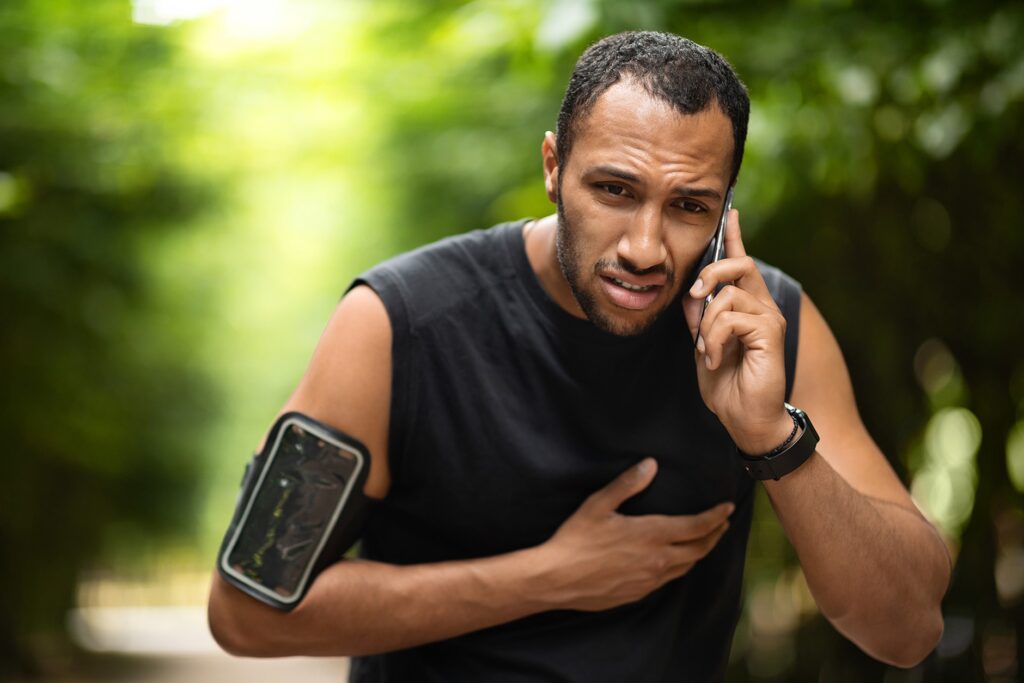Did you know that there is a strong link between sports and cardiac arrest? In fact, according to the American Heart Association, around 7% of all cardiac arrests occur during or immediately after physical activity. This is why it is crucial for people who engage in sports to be aware of the signs and symptoms of cardiac arrest and know how to respond if someone goes into cardiac arrest.
Risk of Sudden Heart Attack for Athletes
Even among younger athletes, sudden cardiac arrests are pretty rare. According to research, high school athletes had a sudden cardiac death (SCD) risk of 1 in 50,000 to 1 in 80,000. Male athletes are more at risk. The risk is reportedly 1 in 13,426 for college-aged athletes, with male college basketball players experiencing a higher risk. (Davidson)
Causes of Sudden Heart Attacks for Young People
Risk factors for sudden cardiac arrest include any illness that stresses the heart or harms its tissue. Young persons may experience the following conditions that might cause sudden cardiac death:
- Thickened heart muscle (hypertrophic cardiomyopathy): This is a hereditary disorder that causes the heart muscle to become excessively thick is the most frequent cause of sudden cardiac death in young people. The thickening can lead to rapid heartbeats and make it difficult for the heart to pump blood.
- Heart rhythm disorders: Fast, erratic heartbeats can result from the heart rhythm problem known as long QT syndrome. It has been related to sudden death and inexplicable fainting, particularly in young people. Congenital long QT syndrome is a type of long QT syndrome that develops before birth. Other causes include underlying illnesses or medications (acquired long QT syndrome). Brugada syndrome and Wolfe-Parkinson-White syndrome are two more heart rhythm problems that can result in sudden cardiac death.
- Blunt chest injury: Commotio cordis is the medical term for a severe chest blow that results in rapid cardiac death. Athletes who take a heavy blow to the chest from another player or a piece of sporting equipment may develop commotio cordis. This disorder does not damage the cardiac muscle. Instead, it modifies the electrical signaling of the heart. Ventricular fibrillation may result if the chest blow occurs at a particular point in the signaling cycle.
- Congenital heart defect: Some people have heart and blood artery abnormalities from birth, which can restrict blood flow and cause sudden cardiac death.
(Mayo Clinic)
Prevention of Sudden Cardiac Arrest in Athletes
Families and communities can take the following actions to reduce the risk of sudden cardiac death in children:
- Regular checkups and physicals for sports: Every youngster requires regular checkups with their physician. To help identify risk factors that may contribute to SCA, these visits offer the opportunity to have a thorough physical examination and a thorough health history. Even if a child does not participate in organized sports, pre-participation assessments are still vital because gym classes and leisure activities can and should include exercise.
- Family History: If you have blood relations (children, siblings, parents, aunts, uncles, nieces, nephews, grandparents, and cousins), gather their medical history regarding their heart health and give it to your pediatrician. This can assist with direct queries asked during well-child exams and physicals for sports.
- Community Life Support Training: The American Academy of Pediatrics supports providing students and school workers with age-appropriate CPR and other life-support training. Additionally, it promotes the placement of Automated External Defibrillators (AEDs) close to sporting and training facilities. AEDs can swiftly administer an electrical shock to restore the heart’s normal rhythm in cases of sudden cardiac arrest.
(HealthyChildren.org)
Sports have been long recognized as a contributing factor to cardiac arrest. The events can be sudden and unexpected, so it is crucial for athletes and coaches alike to know the warning signs and preventive measures against cardiac arrest. Anyone who experiences any warning signs of cardiac arrest during physical activity should seek emergency medical assistance immediately.
If you plan to visit Rice Emergency Room, please complete our online check-in process which you can find HERE
Medical questions can be answered by a physician on duty by calling: (281) 661-ADOC (2362)
Works Cited
Davidson, Katey. “Athletes Dying of Heart Attacks: How Common Is It?” Healthline, Healthline Media, 20 July 2022, www.healthline.com/health/athletes-dying-of-heart-attacks#prevalence.
“What to Know about Sudden Death in Young People.” Mayo Clinic, Mayo Foundation for Medical Education and Research, 10 June 2022, www.mayoclinic.org/diseases-conditions/sudden-cardiac-arrest/in-depth/sudden-death/art-20047571.
“Sudden Cardiac Arrest in Young People.” HealthyChildren.org, www.healthychildren.org/English/health-issues/injuries-emergencies/sports-injuries/Pages/Sudden-Cardiac-Death.aspx.
 24x7 Available
24x7 Available

